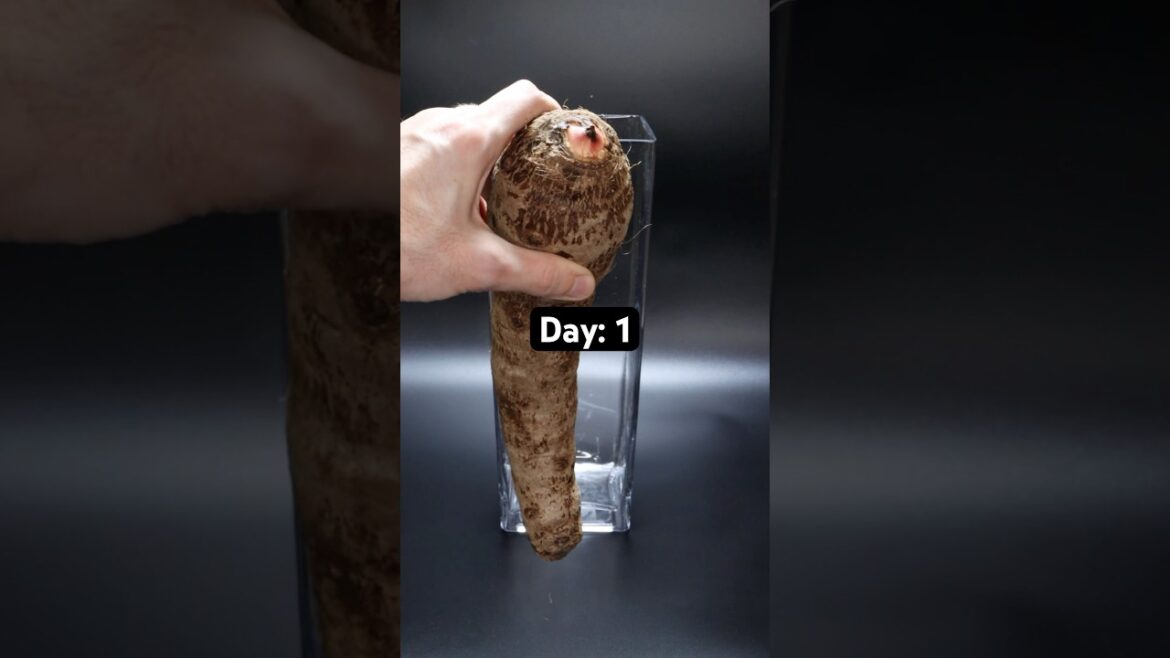in my quest to grow all of the root vegetables I find in Walmart today I picked up the malanga which is also called American taro and cocoa yam native to tropical America it is used as a starch in Caribbean and Latin dishes similar to how we use potatoes the root however cannot be eaten raw due to the presence of stinging calcium oxalate crystals that would normally deter animals from consuming it according to Wikipedia this unsuspecting root feeds 400 million people worldwide furthermore malanga is closely related to alicasia and colicasia which we grow as ornamentals look at her she is just a whole plant we got an elephant ear lots of roots


29 Comments
Check out my latest video on how the plant industry manipulates you into buying plants. Link at bottom of short 💚
That's very fun! Thanks for sharing. It grew into such a lovely plant!
Nick you have the ability to grow hair on porcelain 🫠
And you’ll see that someone will make a variegated version of this and sell it for 1000$ just like variegated banana trees 😂 but honestly didn’t expect it to look this good, very cool plant.
You can EAT Elephant ears!!??😮
I bet that stank like no other
OKAAAYYYY this might be the next big thing⁉️ OR NOT🤣 But it is a cheap way to get a nice plant. That’ll grow big. Just some (maybe a lot of) TLC is needed.
A beautiful leaf, perfect to wrap Igloo Australia in 😍
Cool 😎
No wayyyy!! 😮👏
Some Indians eat the leaves , it’s steamed and coated in a batter made of chickpea flour . Called patra or pateria . You can buy it frozen and recook it in a pan
Wait, that vegetable grew into an elephant ear?!
I wish I could find here in nor cal. I am sure there were some in Hawaii when I went in march but I forgot to look 😢
Me – just about manages to grow the odd carrot top for my budgie
Nick – produces a statement plant from what must be one of the ugliest root veggies in the shop
Do you do other plants in no drainage or was it just for this dude in leca?
AWESOOOMEEE!
This is so cool!
Somebody else have mentioned it but you might want to try growing a Amorphophallus variety (usually sold as konjac tubers in the American market). You will find that they grow into the weirdest plant: alternating between a literal single leaf and a smaller A. titan miniature when it's time to bloom. Variants of A. Muelleri & A. paeniifolia grow wild in riverbanks where I came from
I've done this with Eddoe and found out the hard way, starting these in LECA will cause it to be mushy and rot.
Very similar to and related to taro which is Polynesian especially popular in Hawaii as the dish poi. The 2 can be substituted for each other.
Taro and yam are both starchy root vegetables, but they are distinct. Taro is Colocasia family
CHOP INTO SECTIONS AND GET MORE PLANTS
Looks kinda like elephant ear plant
Wow!!!!
❤
We wat this in West Africa too
This is awesome ❤❤❤❤
Wow!
You holding that root was almost porn. lol! 🥰